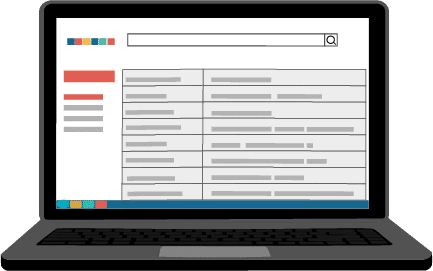Launch a Successful Email Marketing Campaign With These Easy Steps
Whether you’re a large healthcare business or a locally owned practice, email marketing can help you communicate with your audience, increase patient retention, and maximize your return-on-investment.
In the U.S. alone, 251.8 million people have an email account. That’s about 100 million more American users than on Facebook and 150 million more than Instagram (and we thought those platforms were popular!). These statistics help explain why email remains one of the most effective tools businesses can use to communicate with their customers. It’s easier to reach your target audience through a channel they are already using daily!
Email Marketing Campaign Tips
Have you been thinking about starting an email campaign for your practice? Read on to learn how you can put this effective strategy into play at your office.
Step 1: Set your goals.
Before you begin building an email marketing campaign strategy, you first have to determine what you hope to accomplish with that particular campaign. Do you want current patients or clients to make an appointment with you? Are you trying to increase brand awareness? Do you simply want to educate your audience about an industry-related topic? Choose a primary goal and create your marketing materials around this objective.
If this is your first email marketing campaign, it may be difficult to create metrics-based goals as you can’t be quite sure what kind of reach your business has over email. However, once you become more familiar with this strategy, try setting goals based on numbers (such as email open rates, click-through rates, etc.) and tracking those metrics so that you can continuously improve your campaign.

Step 2: Choose a type of email campaign.
Now that you have a goal in mind, you can construct a campaign that will serve that objective.
Here are a few common types of email campaigns that can work for your local business:
- Welcome Emails – This campaign will include one-off emails sent to new patients and email subscribers. Welcome emails give you a chance to build credibility, showcase your brand, and establish a relationship with your audience.
- Promotional Emails – You are likely familiar with this type of campaign. Maybe you even have a few promotional emails from your favorite brands in your inbox right now! This type of email campaign allows you to inform subscribers of sales, promotions, offers, or new services you are currently running at your practice. You may send only one email for each promotion, or you may send several for a monthly campaign.
- Educational Emails – Think newsletters, blog post updates, and educational resources. These emails are not used to generate sales, but rather to keep patients updated on relevant practice or industry news.
- Reengagement Emails – Are there a few patients that need to come in for an appointment? Send patient recall emails to re-engage your clientele.
- Seasonal Emails – As a local business, you have the benefit of creating closer relationships with your patients or clients. Sending emails during holidays or on your email subscribers’ birthdays will help you maintain those relationships.
Step 3: Build your email list.
Constructing an awesome email campaign won’t do much good if you don’t have anyone to send those emails to! A good place to start when creating your email subscriber list is to add all of your existing patients to your master list. This can then be segmented based on the campaign or group of customers, such as new patients that you want to send a welcome email to and existing patients that have graduated to reengagement emails.
When you have new patients or clients come into your office, make sure to get their email addresses so that you can add them to your list.
Remember to include an unsubscribe button in your marketing-related emails. This is a legal necessity to avoid violating the CAN-SPAM Act.
Looking for more ways to grow your email list? Check out this blog post.
Step 4: Create a campaign.
After you have set your goals, picked a campaign type, and set up your desired email list, it’s time to create those emails!
First, determine how many emails you will need to send for this particular campaign. Is this a promotional campaign that only lasts a few weeks? Or is this an ongoing campaign that will be sent monthly? Whatever you choose, be careful not to spam your subscribers with too many emails.
You also want to choose consistent dates for email sends in a particular campaign. For example, if you are sending a newsletter, choose a specific date, like the first Tuesday of the month, to send these emails. This way, your subscribers know when they can expect these communications from you.
Follow these additional email marketing tips for a successful campaign.

Draft a great subject line.
The purpose of your subject line is to convince your audience that they should click-through to your email. A weak, spammy, or uninteresting subject line can cause your email to go directly from the user’s inbox into the trash folder.
When drafting a subject line, try to keep these best practices in mind.
- Keep it Brief – Subject lines will display differently depending on the device your subscriber is using. To be safe, try to use around 41 characters. These subject lines should then be displayed in their entirety on most devices.
- Incite Curiosity – Try posing a question or addressing a common pain point. This will make users want to click-through to find out more details about this subject.
- Induce FOMO – FOMO is the fear of missing out! Convey a sense of urgency so that subscribers know that they must click-through to the email to view the content or claim their offer before it’s too late.
- Be Honest – Don’t tell your subscribers that you have a new offer only to show them an email about your standard services. This will cause the user to distrust your brand and even opt-out of your emails.

Make content easy to read.
An estimated 81% of people skim online content rather than reading it word for word. So, you don’t want to overwhelm your emails with text-heavy content. Your subscribers are busy people, they want to be able to take a glance over their emails and understand its purpose. That leads us to our next tip.

Use visuals and graphics.
Include compelling and relevant images to attract the subscriber’s attention and support your message. Visuals can also be used to break up the text on longer emails and keep users interested.
For example, let’s say you are a veterinarian generating interest in a nonprofit you have started at your practice. You may use images for emotional impact, to highlight a problem, or make a statement that effectively communicates the issue to your subscribers.
Include a call-to-action.
Whether you want web users to subscribe to your newsletters, click-through to your website, or make an appointment at your practice, include this call-to-action (CTA) in the email. Draw attention to the CTA by using larger or bolded text near the top of your copy so that your audience doesn’t miss it.
Step 5: Analyze the data.
Data helps marketers determine which strategies have been successful and which need a little work. It’s likely that whatever tool you are using to create your email marketing campaigns collects data and organizes it into a dashboard that you can view.
Here are a few things that you should look at to determine the success of your campaign:
- Open Rates – This will show you the percentage of subscribers that opened your emails. A low open rate may mean that you need to rethink your subject lines, adjust your send times, or change the sender’s name.
- Click-Through Rates – This is the percentage of subscribers that clicked through to your landing page. A low click-through rate can indicate that the content of your emails need to be reworked.
- Conversion Rates – This is the percentage of people that took a desired action, such as scheduling an appointment with you. The root cause of a low conversion rate is a little trickier to spot. Try having an unbiased party read through your emails and landing pages to identify any issues that may turn web users off.
Launching a Successful Email Marketing Campaign
We hope this article has given you the tools you need to start an email marketing campaign at your practice. If you have additional questions, feel free to reach out to our team of marketing professionals to chat about your business goals.
Check out these other helpful healthcare marketing resources.
Email Marketing Best Practices
Sending Follow Up Emails to Build Patient Loyalty
How to Create a Professional Email Address




